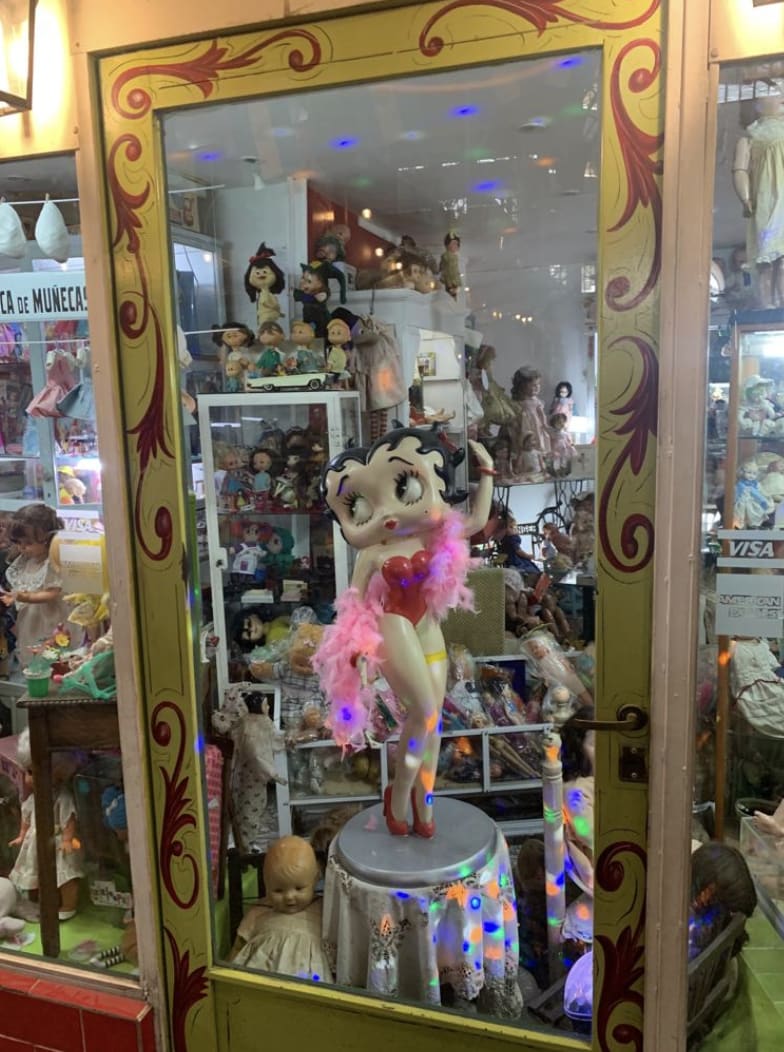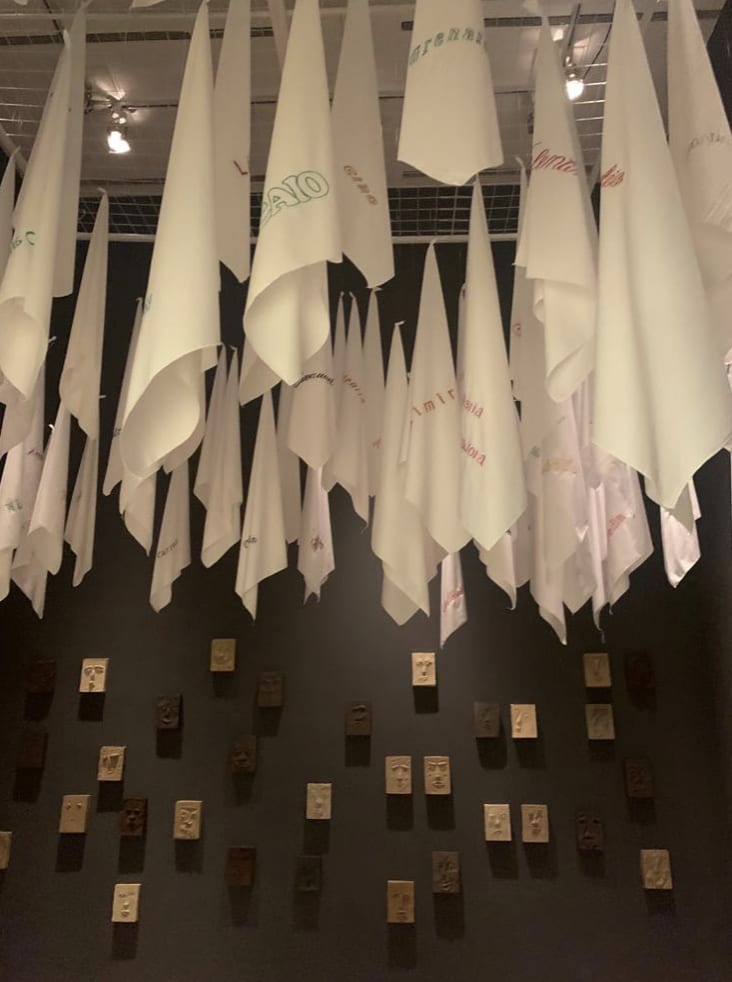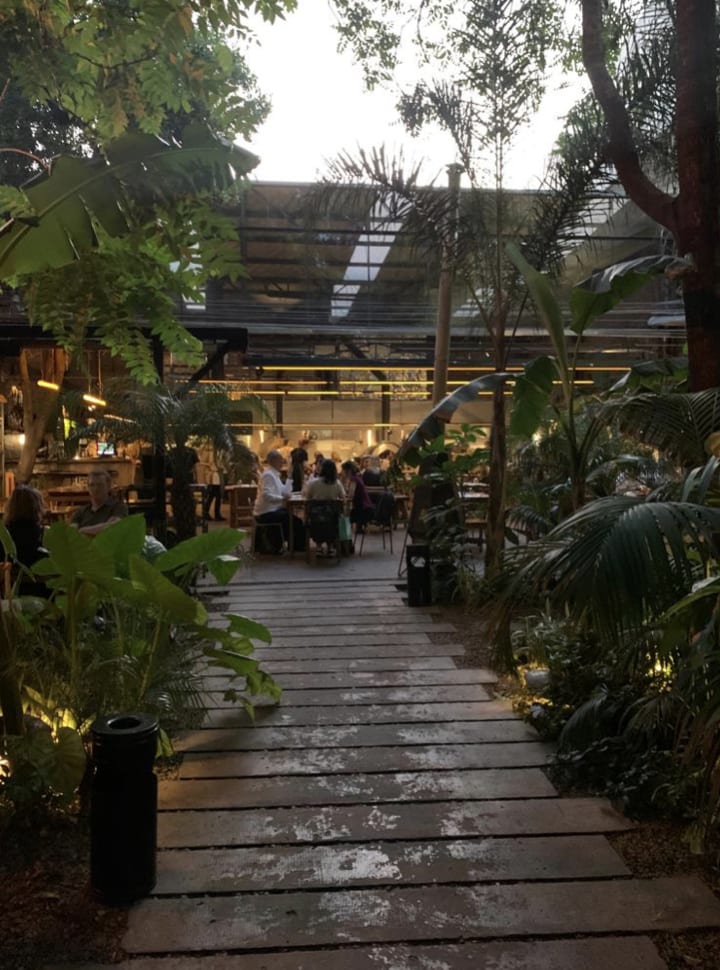What to see and do in Buenos Aires: queer tango, micro-theatre and vegan eats
The ultimate guide to Buenos Aires, as tried and tested by the woo team
The ultimate guide to Buenos Aires, as tried and tested by the woo team
Crossing through the street through six-lane traffic in central Buenos Aires makes you feel like a teensy, tiny ant. It's a city sensation familiar to many, but one only magnified by the grandiose scale of the buildings in the Argentine capital, be it the sprawling, baby pink facade of the Casa Rosada or the domineering columns of Teatro Colón. But despite BA's population of 15 million, it's surprisingly easy to navigate its streets as it quickly loses the imposing feel once you delve into its smaller neighbourhoods.
What to see in Buenos Aires
But I don't need to tell you all this - if you're reading this, you're either in the city now (congrats!) or planning a trip there (good decision) and you're just looking for what to do and see in Buenos Aires rather than a soliloquy on its unique character. Well, I've got some good news: I'm going to cut to the chase and give you some tips as someone who has been in your shoes.
Travel to Buenos Aires
Sadly, you're going to struggle to get a low-carbon method of transport if you're planning to head to Argentina from the UK. So, plane it is! Personally, I flew from Heathrow to Buenos Aires with a stopover in São Paulo for 8 hours, just enough time to visit some friends of friends (shoutout to Rafael and Thales) who took me to check out the ultramodernist Dengo chocolate factory, stroll across the Ibrapuera Park, wander through the garden at the Casa das Rosas and sample plenty of Brazilian food - from açaí to pão de queijo.
My carrier was LATAM and on the way back the stopover was in São Paulo again as well as in Asunción in Paraguay, where I was able to spend the day and hit up local legend bakery Oveja Negra (where I discovered the delights of a dulce de leche croissant) and check out the city's Cultural Center of the Republic, housed in a hugely imposing mansion.
The best hotels and Airbnbs in Buenos Aires
Well, to be honest I cheated on this front - staying with my friend on Republica Arabe Siria near the Evita Museum in the Palermo Chico zone of the Palermo neighbourhood. I would recommend staying in this area due to the sheer volume of cute cafes, wine bars and restaurants. But a lot of young people in Buenos Aires also live in Villa Crespo, so that could be a good shout in terms of places to stay.
If you fancy sleeping in a hotel, try the Hotel Pulitzer - decorated in a slightly 60s modernist style with a white and blue decor and a lobby brimming with books on Argentine art, it is the epitome of chic. The restaurant offers Spanish fusion food overseen by chef Ismael Alonso and a selection of gorgeous Latin American wines.
The best restaurants in Buenos Aires
The food in BA is quite honestly chef's kiss. First up, an intro on some local delicacies. If you're a fromage-o-phile, be sure to get some provoleta: a variant on Italian provolone, it's served grilled and topped with oregano, chilli or chimichurri (oils and spices) and often with bread. Anyone with a sweet tooth would do well to sample alfajores, a biscuit stuffed with dulce de leche and rolled in desiccated coconut. Then, of course, there's the meat! Personally, I'm a vegetarian (susceptible to going vegan whenever I think too hard about climate change), but asado - grilled or barbecued meat - is a huge part of the food culture in Argentina. And the country's beef is world-renowned.
So now you know a tiny bit about the best Argentine classics, here are some restaurants and eateries to look out for in BA, as sampled by yours truly.
Chuí: Chuí is an Instagram-famous restaurant in Villa Crespo that is located in a semi-covered warehouse filled with huge (and I mean huuuuge) trees. It boasts fresh, plant-based meals, as well as amazing pizzas for sharing and is a great place to go with a large group.
Bfresh: If blended juices, barista coffee and complicated-looking salads are your thing, then head to Bfresh, which offers a bit of LA-style clean eating to the city of Buenos Aires in a serene cafe fronted by a shop selling a banging selection of wines (you know, the kinds with the Instagrammable labels on the bottle).
San Telmo market: A bit of a local legend, San Telmo market in the (duh) San Telmo area is a covered market which first opened its doors in 1897. Originally catering towards the influx of European immigrants to the city, behind the Italian-style facade is food from pretty much every corner of the world, as well as coffee, bars and eclectic antiques.
Puerta: This cosy restaurant serves primarily vegetarian (but also vegan) food, and specialises in simple but beautifully prepared eats.
Birkin: An ideal place to wile away a morning while hungover out of your brain, there are two branches of this cafe in BA and both offer beautifully prepared brunch and elite lunch options.
El Jaial Kosher Market: There's a large Jewish community in Buenos Aires, which is reflected in the city's culinary scene. If you're in Palermo Chico, you can head to El Jaial Kosher Market to stock up. If you're in Villa Crespo and fancy a bite to eat you can head to the famous La Crespo.
Things to do in Buenos Aires
As a capital city, Buenos Aires has a huge culture scene, particularly given its history as a centre for migration for individuals from all across Europe and Latin America - though tourists may mostly associate it with tango, an intimate form of ballroom dancing. The city has also been the home of literary giants like Jorge Luis Borges and Julio Cortázar as well as contemporary writers like Gabriela Cabezón Cámara, Selva Almada and Claudia Piñeiro.
I did, in fact, sample the tango in the city (more on that later) by going for a session at a tango school which was recommended by the flatmate of my friend in Buenos Aires, who attends the same school twice a week. Through the class I eventually picked up some pointers - namely to keep my body fluid rather than stiff and to ensure as little space between my partner's body and mine as is possible without touching. There's a grey cat that lives in the studio I was having my lesson in, which slinked around the floor as we all danced, and after the session the teachers served empanadas as a post-tango snack. Everyone is pretty experienced and the class is run in Spanish so I wouldn't recommend it to beginners - and I also swore I wouldn't give the name away, in order to keep it safe from tourists. You can, however, easily find another tango class in BA if you ask Google.
Apart from tango, I spent a lot of time at galleries and wandering through the city - even popping on a boat over to Uruguay for the day. Here are my picks.
Cafe la poesia: This is a pretty legendary spot in San Telmo and is located within a turn of the 19th century building, and the interior is complete with a dark wooden bar and tiled floors. In the '80s it became a gathering spot for intellectuals and writers as the military dictatorship came to an end and greater cultural freedom began to flourish once more. Very main character vibes.
Museo de Arte Latinamericano de Buenos Aires: Commonly referred to as MALBA, the Museo de Arte Latinamericano de Buenos Aires is a must-visit if you're interested in contemporary art and is dedicated to the preservation of modern and contemporary art from the continent. It was founded in 2001 and contains works by the likes of Diego Rivera and Frida Kahlo and I spotted work by Las Yeguas del Apocalipsis, the influential Chilean performance art duo who rose awareness of the HIV crisis in Latin America throughout the 80s and 90s. There was also an exhibition of work by Brazilian artist Anna Maria Maiolino, with a striking installation paying homage to the Madres de Plaza de Mayo who formed in order to protest the disappearances of their children under the Argentine Military Dictatorship.
Centro de Desarrollo Cultural Airaldi (CDCA): Also in San Telmo lies a lesser-known cultural venue: the Centro de Desarrollo Cultural Airaldi or CDCA. This is a somewhat bizarre micro-museum founded by the multidisciplinary artist Mariano Airald. There's a cafe/bar in the front and it offers a range of free cultural activities across art, music and film. The bit that struck me the most was what looked like a permanent collection of various analogue items (cassette players, old TVs, old camcorders) and a room lit up in blue with hundreds of plastic bottles hanging from the walls like stalagmites as well as grafiti with names of visitors.
Kirchner Cultural Centre: The largest cultural centre in Latin America, BA's former postal centre is now the Kirchner Cultural Centre (KCC): a nine-floor neo-classical cultural space complete with a concert hall, exhibition rooms and a central space for large-scale, floor-spanning installations. It also contains a reconstructed version of the office of Eva Perón (affectionately called Evita, and still beloved in the city) - including a mountain of fan mail in one corner. The KCC is in the San Nicolas area, where you can also check out major landmarks like the Casa Rosada (a palatial pink mansion, and office to the President) and Teatro Colón, a stunning opera house that's considered one of the best in the world.
Puerto Madero: Puerto Madero is a dockside part of Buenos Aires and features the modernist Puente de la Mujer bridge which is designed to look like a couple dancing tango and is engineered so that it can rotate a full 90 degrees. If you like architecture (or boats) it's worth a stroll.
Pasaje Lanín: If you're looking for street art, head to Pasaje Lanín which is covered in murals by the artist Marino Santa Maria as part of a project to reinvigorate the formerly industrial neighbourhood of Barracas.
Colonia del Sacramento: Okay not technically in Buenos Aires, Colonia del Sacramento is actually in Uruguay. However, it's very close to Buenos Aires and is about 50 minutes away by ferry. The main draw to Colonia is its Barrio Histórico which is covered in cobblestones and is listed as a UNESCO World Heritage site. The town is also directly on the coast (...given you've probably just got there by boat) so if you're into staring into the lapping waves on the shore, it's a winner. Be warned: there's not a lot of wifi, not a lot of places to charge your phone and if you have a MasterCard card it won't work in many retailers - but cashiers accept any kind of Latin American currency.
The best nightlife in Buenos Aires
Normally I am a bit of a club rat but apart from heading to the gay bar Glam Disco in Recoleta, which plays a mix of American pop and reggaetón, I swerved the clubs and stuck to wine bars - which felt very chic and grown-up. Here are the details of what I got up to.
Batacazo Cultural: You know how I mentioned earlier that I'd be talking more about tango? Well, now the time has come. Batacazo Cultural is an independent, LGBTQIA+ and trans-inclusive feminist space which has a bar and runs various cinema, literary and art events as well as a weekly queer milonga. A milonga is a party where people dance tango and has traditionally been dominated by old-school heteronormative gender roles. However, across Buenos Aires there is a queer milonga movement featuring same-sex tango couples or tango pairings where gender roles are reversed. If you're looking for more LGBTQIA+ culture you can also head to the more established (and less DIY) Casa Brandon.
Microteatro: If you've spent long enough around vaguely cool people in Spain (you know, like film students and artists in some kind of chaotic flatshare in Lavapiés) you'll know about microteatro. Literally "micro theatre" it's a form of theatre experience which involves a rotating selection of short-form plays, normally about 15 minutes in length and is often combined with food or drinks. Now, the trend has hit Buenos Aires, with multiple locations across the city.
Invernadero in Biblioteca Nacional Mariano Moreno: Located within the grandiose national library in Buenos Aires is Invernadero, a gin, cocktail and tapas bar open until 2am every evening. Given its location, it'll make you feel like some kind of sexy Bond Girl (regardless of your gender).
Aldo's: Argentina is known for divine wine, so fill up your glass at Aldo's. It's got a louche, relaxed feel to it, plenty of vino to choose from and some small bites to eat. FYI it doesn't have an English menu, so be sure to have Google Translate handy.
Pics or it didn't happen
Enjoy pics from my time in BA, so you know that these recs really have been tried and tested. Behold, the contents of my camera roll...










